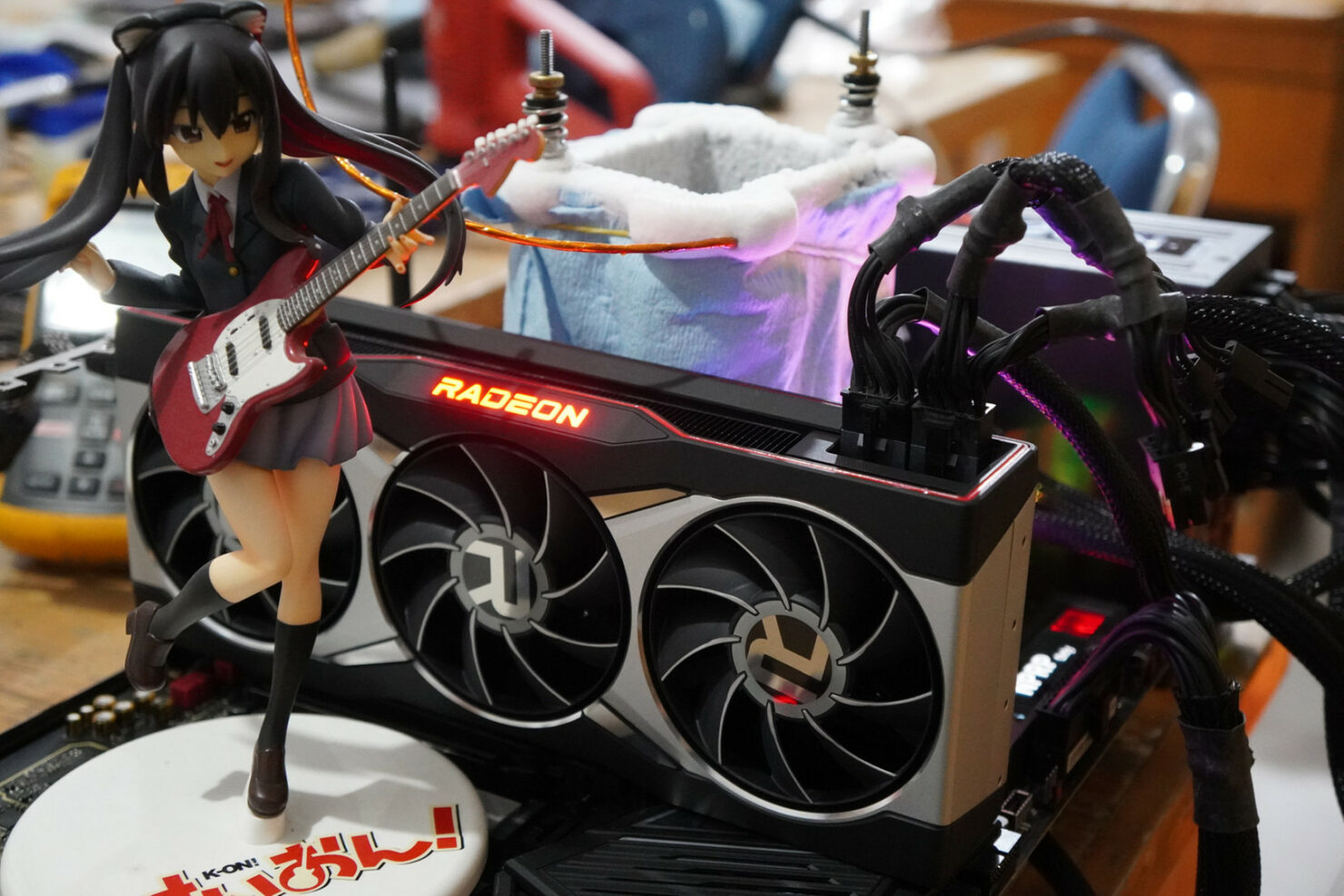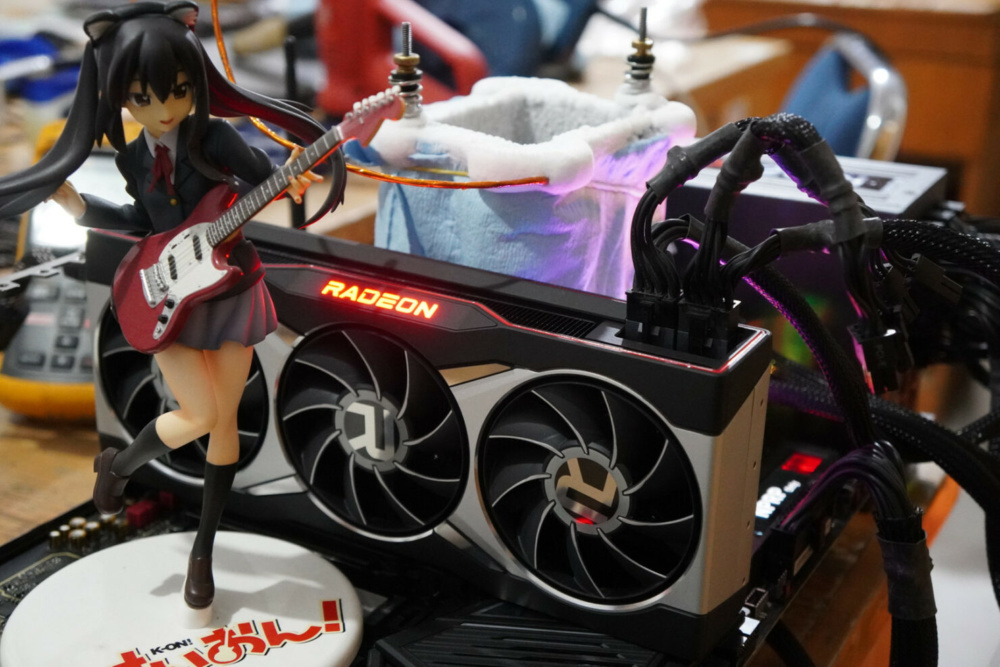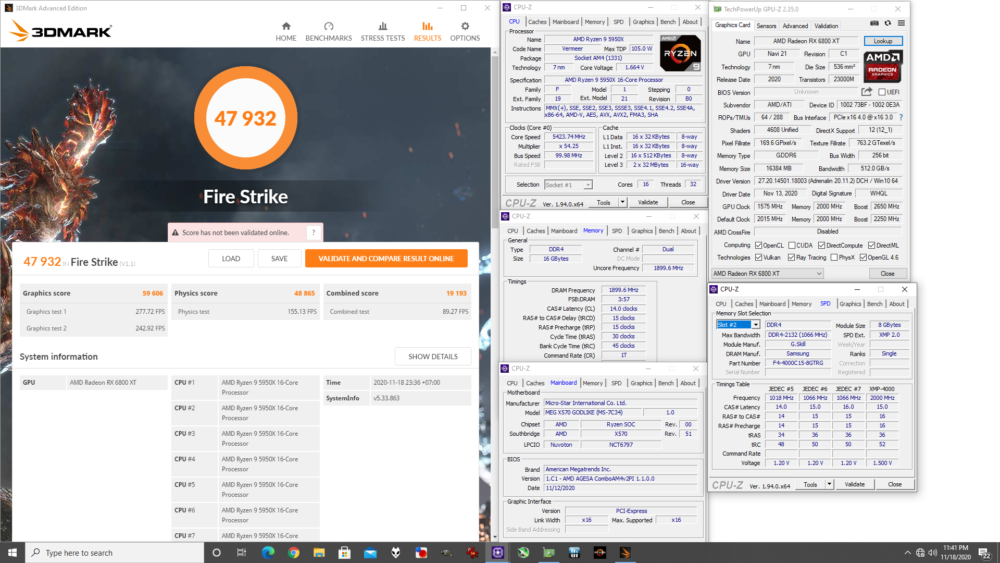The Radeon RX 6800 XT was launched yesterday, and it already made a world record in 3D Mark benchmark. Lucky_Noob (Alva Jonathan) was able to achieve a world record using Radeon RX 6800 XT graphics card on-air hence outperforming several Liquid Nitrogen cooled RTX 3090s.
It has been observed from independent testing that AMD’s Big Navi GPU offers high clock speeds and the Indonesian overclocker was able to use the clock speeds to his advantage and without the need of any Liquid Nitrogen.
The machine used to benchmark featured AMD Ryzen 9 5950X overclocked to 5.42GHz using LN2. It also featured a MEG X570 GODLIKE motherboard, 16 GB of DDR4 at 4000Mhz (Cl14 timing) and a Corsair 1200W power supply. The GPU was overclocked to 2.65Ghz using its triple-fan cooling.
As far as the scores are concerned, the Rx 6800 XT was able to score 47932 points in 3D Mark Fire Strike. While the RTX 3090 scored 47725 points that too on LN colling. This is the first time AMD beats NVIDIA in core clock speeds.
Although there’s a difference of 0.5% b/w the scores, it is an achievement for AMD as they have achieved it with reference to air cooling. The 6800 XT isn’t the high-end card by AMD, the RTX 6900 is which will arrive next month, and it may perform even better. Moreover, the cards could cross the 50k mark if cooled using LN2.
The AMD Radeon RX 6800 XT will feature the Navi 21 XT GPU that features 72 Compute Units or 4608 SPs. The card will also feature 16 GB of GDDR6 memory, a 256-bit bus interface, 512 GB/s total bandwidth, a base clock speed of 2015 MHz, and a boost clock speed of up to 2250 MHz. The AMD Radeon RX 6800 XT also features 72 Ray Accelerators which are dedicated to real-time raytracing workloads. The card will have a TDP of 300W while the factory-overclocked models TDP will be greater than 350W.
The Radeon RX 6800 series graphics cards will also feature 128 MB of Infinity Cache on the GPU die. The cache helps deliver great performance at resolutions beyond HD by boosting the bandwidth. The bandwidth receives a 3.25x boost thus increasing the standard 512GB/s to 1.664 TB/s across all Big Navi GPU based graphics cards.
Via Hwbot




